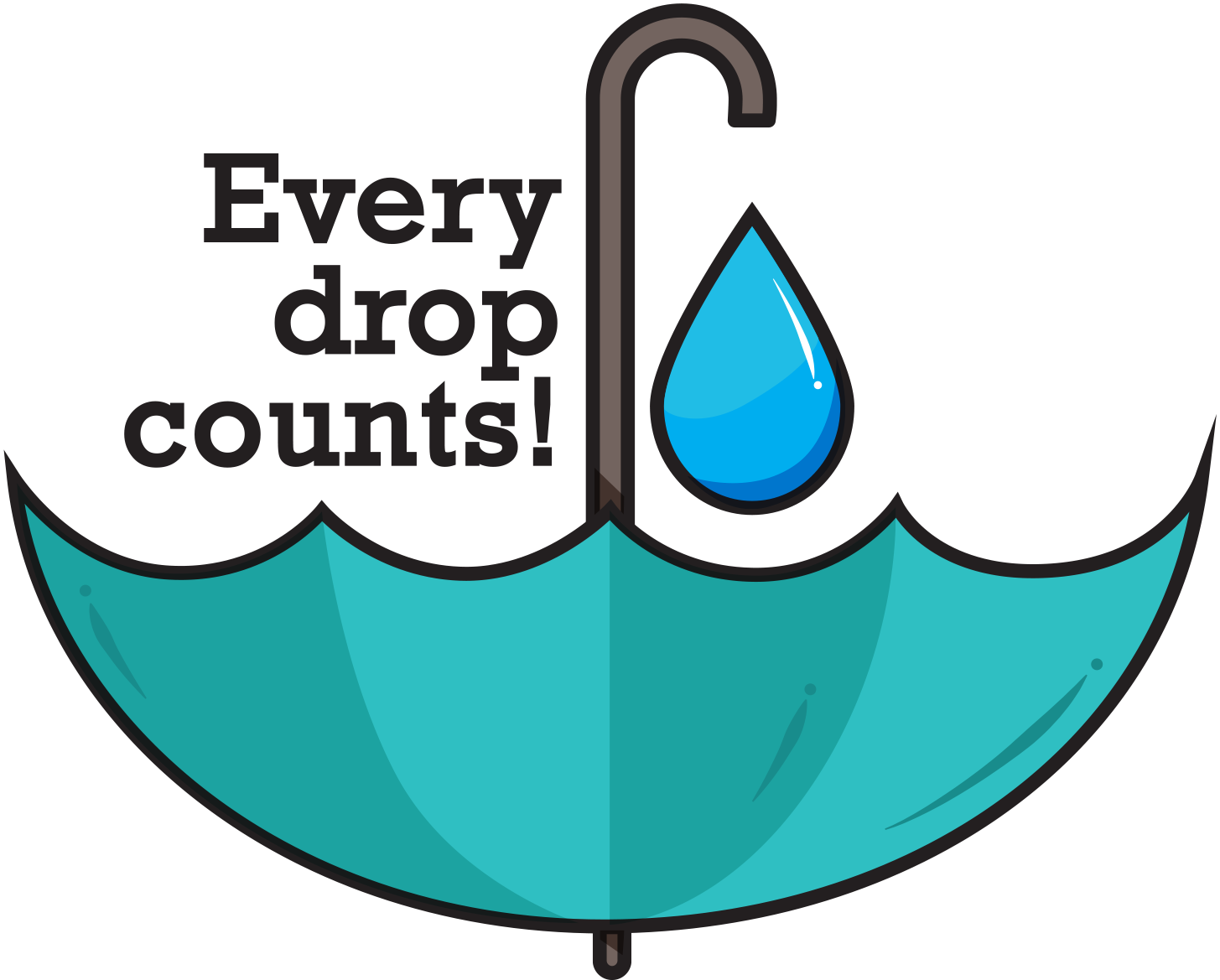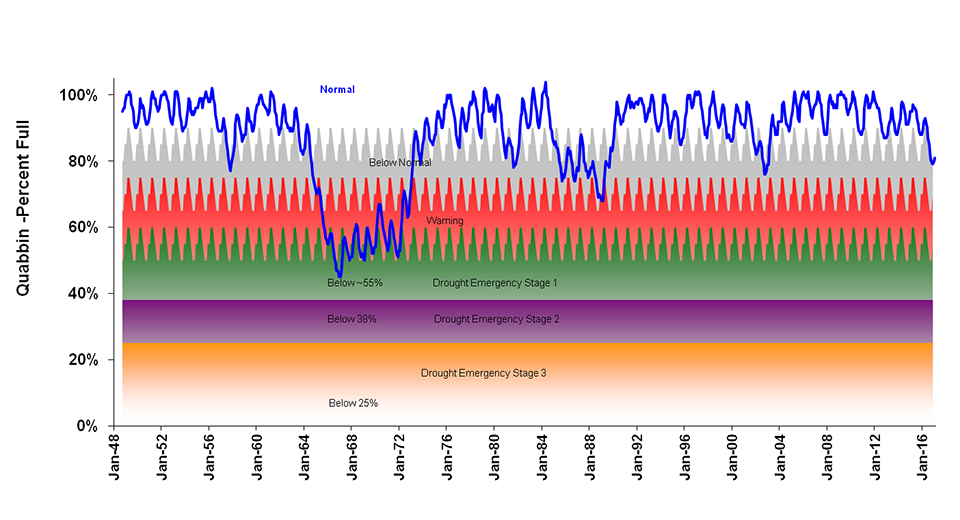MWRA Partially-Supplied Water Service Communities The communities below receive a part of their water supplies from MWRA. If you live in a partially-supplied community, you should check with your local water department to see if your city or town has mandatory water restrictions in place. |
||
Cambridge (only in emergencies) |
||
Massachusetts Water Resources Authority
PRESS RELEASE
Updated:
Posted:
June 1, 2017
August 19, 2016
Contact:
Ria Convery
(617) 788-1105, Ria.Convery@mwra.com
MWRA Urges Water Conservation
 Update June 1, 2017 The Quabbin Reservoir remains at Below Normal status for this time of year, at 88.1%. Quabbin storage dropped from Normal to Below Normal status in mid November, 2016. While no mandatory restrictions are in place, MWRA continues to urge consumers to use water wisely. This year’s Annual Water Quality Report contains tips for saving water indoors and outdoors. The ranges change from season to season. In the fall, “Below” starts at 80% because we expect the reservoir to be lower after summer usage. In the spring, “Below” starts at 90% because we expect snowmelt will have filled up the reservoir. In July, August and September, “Below” goes down incrementally to 88%, 85% and 83%, respectively, and brings it back to 80% in October. Update May 1, 2017 The Quabbin Reservoir remains at Below Normal status for this time of year, at 85.7%. Quabbin storage dropped from Normal to Below Normal status in mid November, 2016. While no mandatory restrictions are in place, MWRA continues to urge consumers to use water wisely. Please see links to water conservation tips below. The ranges change from season to season. In the fall, “Below” starts at 80% because we expect the reservoir to be lower after summer usage. In the spring, “Below” starts at 90% because we expect snowmelt will have filled up the reservoir. In July, August and September, “Below” goes down incrementally to 88%, 85% and 83%, respectively, and brings it back to 80% in October. Update April 7, 2017 The Quabbin Reservoir remains at Below Normal status for this time of year, at 82.1%. Quabbin storage dropped from Normal to Below Normal status in mid November, 2016. While no mandatory restrictions are in place, MWRA continues to urge consumers to use water wisely. Please see links to water conservation tips below. The ranges change from season to season. In the fall, “Below” starts at 80% because we expect the reservoir to be lower after summer usage. In the spring, “Below” starts at 90% because we expect snowmelt will have filled up the reservoir. In July, August and September, “Below” goes down incrementally to 88%, 85% and 83%, respectively, and brings it back to 80% in October. Update March 1, 2017 Update February 1, 2017 Update January 20, 2017 Update November 15, 2016 Water Conservation TipsWe know that conservation works. Over the last 30 years, customers in the MWRA service area have reduced their average daily demand from 340 million gallons per day in 1980 to about 200 million gallons. It is important that these conservation efforts continue - especially during dry periods such as this. Our website has many tips on how to save water indoors and outdoors to share with your residential customers. For information about water conservation for businesses and public facilities, visit our pages on water efficiency for commercial buildings, hospitals and restaurants. In addition, we have indoor and outdoor conservation brochures, as well as low-flow replacement aerators for kitchen and bathroom faucets, and low-flow shower heads, which we provide to our customers free of charge. If you would like any of these materials, please click here. For more information on how to conserve water, call the MWRA’s water conservation line at (617) 242-SAVE. |
### |
Follow us |
Updated
June 1, 2017
Original Post: August 19, 2016

